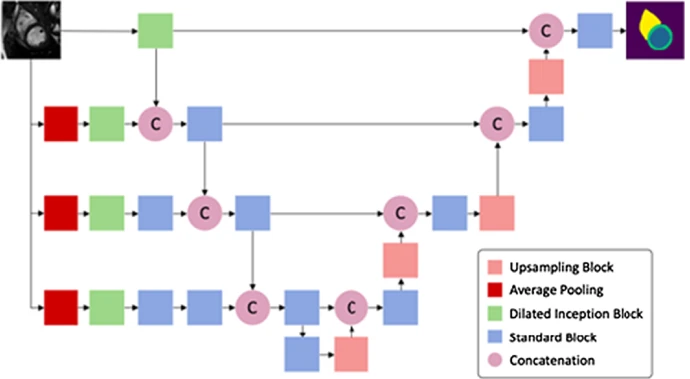
Myocardial segmentation using contour-constrained optical flow tracking
Despite the important role of object tracking using the Optical Flow (OF) in computer graphics applications, it has a limited role in segmenting speckle-free medical images such as magnetic resonance images of the heart. In this work, we propose a novel solution of the OF equation that allows incorporating additional constraints of the shape of the segmented object. We formulate a cost function that include the OF constraint in addition to myocardial contour properties such as smoothness and elasticity. The method is totally different from the common naïve combination of OF estimation within
Health Records Privacy Issues in Cloud Computing
Personal health record service avail patients to store and dominate their healthy information data through the cloud. Many users like medical doctors, health care providers and family members can access this data through the internet. However, there are privacy issues related to data exposure and data breaches, causing risk to patients' lives. Encryption techniques like public key encryption are applied but they are not efficient and very complex, in addition to scalability problems. In this paper, various multi-authority attributes based on encryption solutions features are discussed that

MC-GenomeKey: A multicloud system for the detection and annotation of genomic variants
Background: Next Generation Genome sequencing techniques became affordable for massive sequencing efforts devoted to clinical characterization of human diseases. However, the cost of providing cloud-based data analysis of the mounting datasets remains a concerning bottleneck for providing cost-effective clinical services. To address this computational problem, it is important to optimize the variant analysis workflow and the used analysis tools to reduce the overall computational processing time, and concomitantly reduce the processing cost. Furthermore, it is important to capitalize on the
TCAIOSC: Application Code Conversion
Traditional mobile application development requires going through multiple development cycles in order for an application to work on different platforms. In cross-platform development, the application goes through only one development cycle to be deployed in multiple environments. Various cross-platform methodologies were explored to make it easy for developers to deploy their apps; one of which is the Trans-Compiler methodology. This paper discusses advances to a cross-platform solution, TCAIOSC, which converts Android projects to iOS, inquiring into further aspects of Android-To-iOS
Insilico Codon Bias Correction for Transgenic Biological Protein Sequences for Vaccine Production
Codon optimization is primarily used in enhancing the levels of protein expression in the host species. Each species has its own codon usage bias, which represents the codons abundance frequency in that species. Using the host usage profile contributes to personalize the synthesis of the DNA vaccines that can achieve highly active vectors the host cells. For optimizing protein expression levels in a particular host, the genetic code sequence needs correction of codon frequency bias to match the expression of host codon landscape rather than the donating organism profile. In this work, we have
The case for docker in multicloud enabled bioinformatics applications
The introduction of next generation sequencing technologies did not bring only huge amounts of biological data but also highly sophisticated and versatile analysis workflows and systems. These new challenges require reliable and fast deployment methods over high performance servers in the local infrastructure or in the cloud. The use of virtualization technology has provided an efficient solution to overcome the complexity of deployment procedures and to provide a safe personalized execution box. However, the performance of applications running in virtual machines is worse than that of those

Multi-center, Multi-vendor, and Multi-disease Cardiac Image Segmentation Using Scale-Independent Multi-gate UNET
Heart segmentation in Cardiac MRI images is a fundamental step to quantify myocardium global function. In this paper, we introduce a pipeline for heart localization and segmentation that is fast and robust even in the apical slices that have small myocardium. Also, we propose an enhancement to the popular U-Net architecture for segmentation. The proposed method utilizes the aggregation of different feature scales from the image by using the inception block along with the multi-gate block that propagates the multi-scale context of the supplied data where the heart is subject to changes in scale
Combined regional and spatio-temporal approach improves hepatic tumors classification in Multiphase CT
In this work, we investigate the effect of using spatio-tepmoral features on a regional basis on the liver focal lesions classification performance in the multiphase CT images. Texture, Density, and temporal feature set and their different combinations along spatial partitioned ROI were investigated to better characterizing five hepatic pathologies from multiphase contrast-enhanced CT scans. Embedded feature selection followed by decision tree ensembles classification with ten folds cross-validation were employed to classify a total of 180 ROI includes normal tissues, cyst, haemangioma
Features selection for building an early diagnosis machine learning model for Parkinson's disease
In this work, different approaches were evaluated to optimize building machine learning classification models for the early diagnosis of the Parkinson disease. The goal was to sort the medical measurements and select the most relevant parameters to build a faster and more accurate model using feature selection techniques. Decreasing the number of features to build a model could lead to more efficient machine learning algorithm and help doctors to focus on what are the most important measurements to take into account. For feature selection we compared the Filter and Wrapper techniques. Then we
Controlled alternate quantum walks based privacy preserving healthcare images in Internet of Things
The development of quantum computers and quantum algorithms conveys a challenging scenario for several cryptographic protocols due to the mathematical scaffolding upon which those protocols have been built. Quantum walks constitute a universal quantum computational model which is widely used in various fields, including quantum algorithms and cryptography. Quantum walks can be utilized as a powerful tool for the development of modern chaos-based cryptographic applications due to their nonlinear dynamical behavior and high sensitivity to initial conditions. In this paper, we propose new
Pagination
- Previous page ‹‹
- Page 9
- Next page ››
